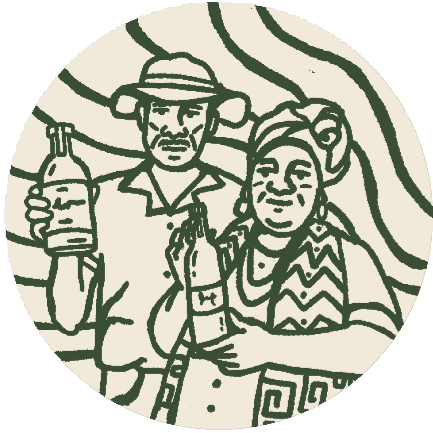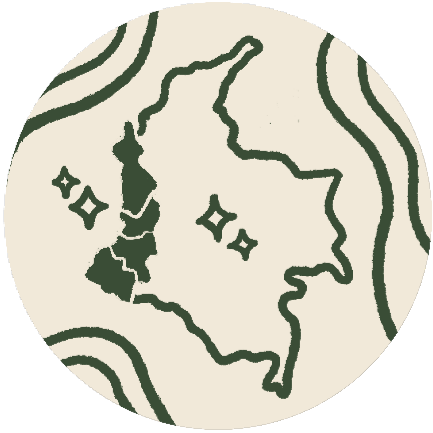From the sky, you can admire the imposing Western Mountain Range and the vastness of a dense jungle area, with lush beauty drained by mighty and deep rivers such as the San Juan, Atrato, Mira, Patía, and Baudó, which geographically weave the landscape and flow into the warm waters of the Pacific Ocean.
In the coastal regions of the departments of Chocó, Valle del Cauca, Cauca, and Nariño, located on the Colombian Pacific coast, approximately one million people belonging to Afro-Colombian and indigenous communities reside. These communities coexist in various territories, exchanging ancestral knowledge and basing their economic systems on the sustainable use of rivers and natural resources in the region.
Our destination is Chocó, and our arrival a in Nuquí occurs amidst the excitement of the 2023 regional elections, with the presence of the army ensuring the protection of the right to vote in an area where the public order is uncertain.

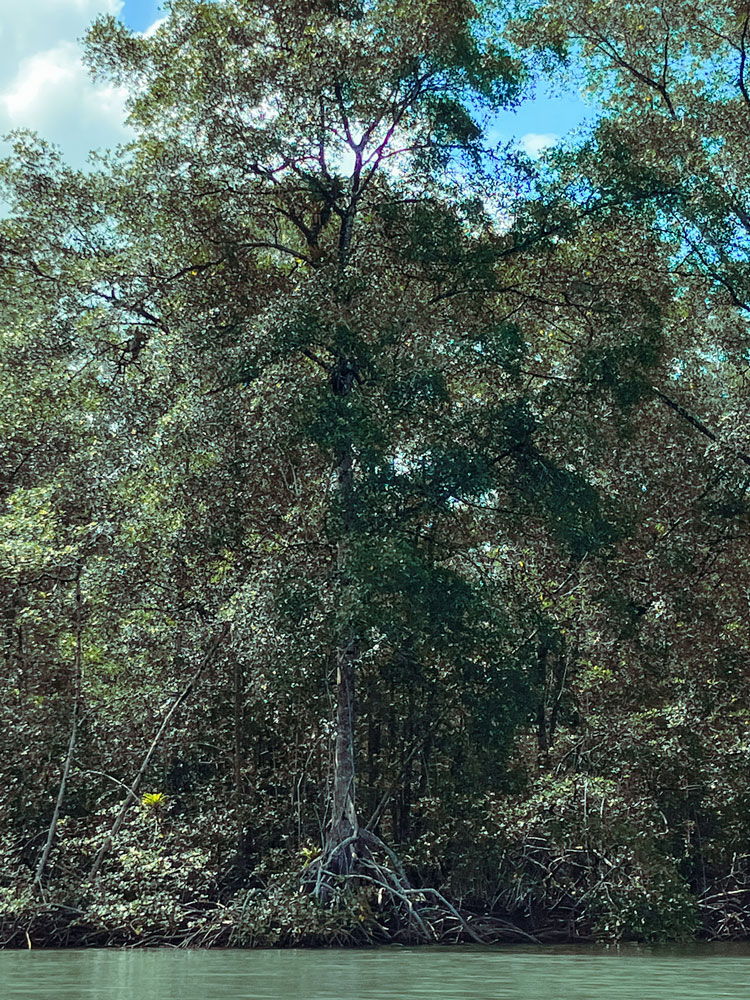
Diego Gonzáles Valdés, our dear Viche Master from Chocó, who lives off tourism and produces the Viche Son de Caña in Guachalito, eagerly awaits for us with a warm welcoming smile. It is great to see him again! After a quick tour of the municipality of Nuquí, Master Diego takes us to the first point of our Viche Mission, Guachalito, located in the Gulf of Tribugá, a 40-minute journey away.
The arrival at Guachalito beach is thrilling! Master Diego anchors his boat and leads us to his Ecolodge Mar y Rio, which faces a beautiful beach next to a river swollen by the high tide. We are greeted at his viche bar by Dayane with a very special cocktail: coconut water with viche.
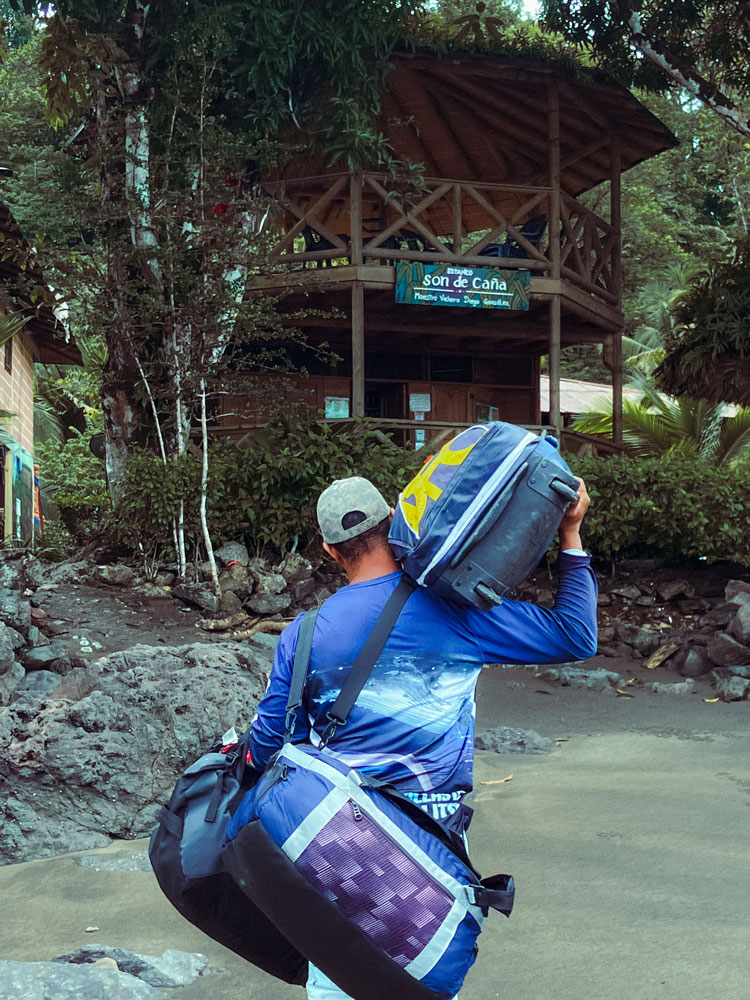
Guachalito is a slice of paradise on earth, a temporary home to humpback whales and the friendly locals who were born and raised there. We explore the Viche Route, a tourist activity led by Master Diego, where he showcases everything from the traditional four-column sugar mill inherited from his grandfather to the production area. We dip into Master Diego's river and sea, listen to and watch the whaled, savor fresh fish, and understand why Viche Son de Caña is so rich in flavors and aromas, both complex and unique.
This is the richness of viche! When a pot of fermented sugarcane juice is boiled in a distillation still, the vapors that condense and give rise to vichecapture all the richness of its biodiverse environment, the ancestry, history, and resilience of the people who produce it.
We learn more about distillation techniques and Maestro Diego's persistence in creating a product of increasingly higher quality. We become acquainted with his determination to produce a viche with superior attributes, realizing that his knowledge has been perfected through countless trials and empirical observations of how different varieties of sugarcane behave during the cooking and fermentation process, which is crucial in determining the transparency and purity of the ancestral elixir. Diego distills his viche under the gaze of our cameras and curious eyes eager to uncover his secrets. We taste the freshly distilled Viche Son de Caña and fall even more in love with its flavor, aroma, and essence.
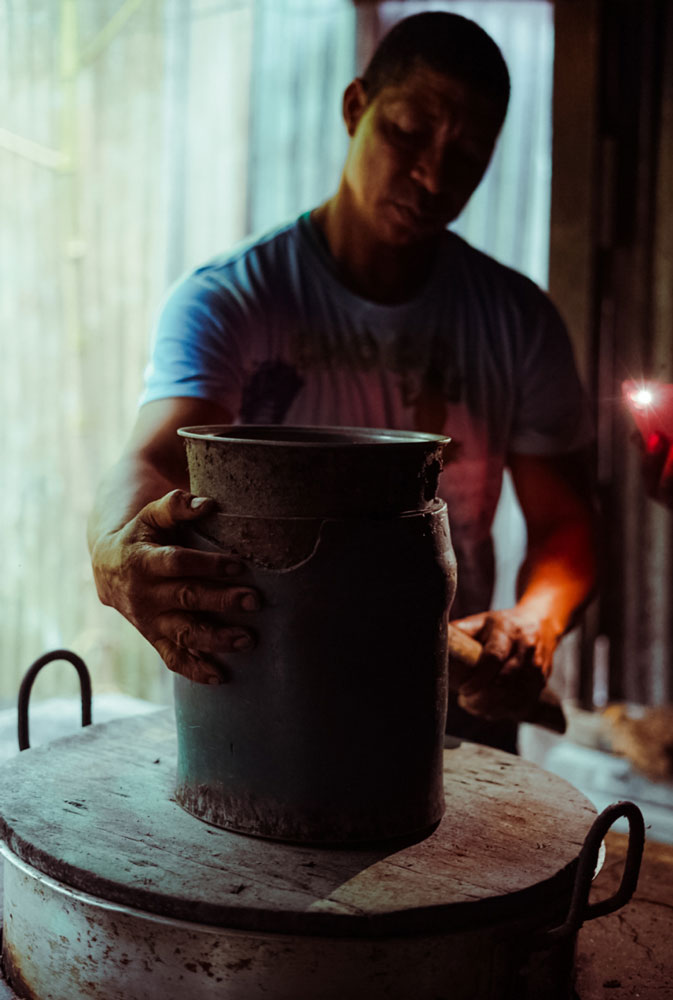
Later on, we have the privilege of being introduced to Mrs. Nora, a "retired" Master Vichera, and Mr. Marciano, Diego's parents, who share stories of the land and how they made Guachalito their home.
Marciano's parents settled in Guachalito and started a family –"I was born up there..." he says, pointing to where one of his daughters now lives, who can observe the whales from the balcony of her house. Years later, he meets Doña Nora in Jovi, they marry and also start a family.
The weather is pleasant, sunny, and unusual, as Don Marciano tells us, criticizing that climate change has made it possible to enjoy such conditions for consecutive days; generally, this beach is cold and subject to constant rain.
The father takes great pride in the man Maestro Diego has become and tells us with conviction that his son's viche is recognized by the local public and by foreigners who come to visit the Mar y Río inn. In fact, Maestro Diego is a very active and entrepreneurial man: he designed and built his inn with his own hands, he is a viche producer, and while he sets the fermented guarapo to distill, he quickly climbs a nearby palm tree to harvest the coconuts with which he will make his famous coconut candies, prepared with cane honey also produced by him; additionally, he is a fisherman, diver, ocean protector, and a great lover of his environment.
We are accompanied by Maestra Susana Montaño Granja, producer of Viche Del SolarSan Bernardo de Saija, Timbiqui, Cauca, who is pleased to be able to distill viche with Maestro Diego and exchange distillation techniques.

Along with her and under the guidance of the Maestro, we set off by boat towards Virudó in Bajo Baudó, a district transformed into an island with a strong tradition in viche production.
During the journey, we are amazed by the emerald green waters of the Chocó Sea, imposing rocky formations with arches formed by the crashing waves, and tunnels where the tide blows in and out, creating large water vapors. We spot a family of humpback whales where the mother nurses her calf; the mother whale is passive, moving extremely slowly, carried by the current as she nurses her offspring.
After an hour-long boat ride in the open sea, we reach the river veins that provide access to our destination, surfing the waves to finally enter the portal that gives us access to the maritime road to Virudo. This road is made of unforgettable centuries-old mangroves and is surrounded by vibrant life and natural beauty.
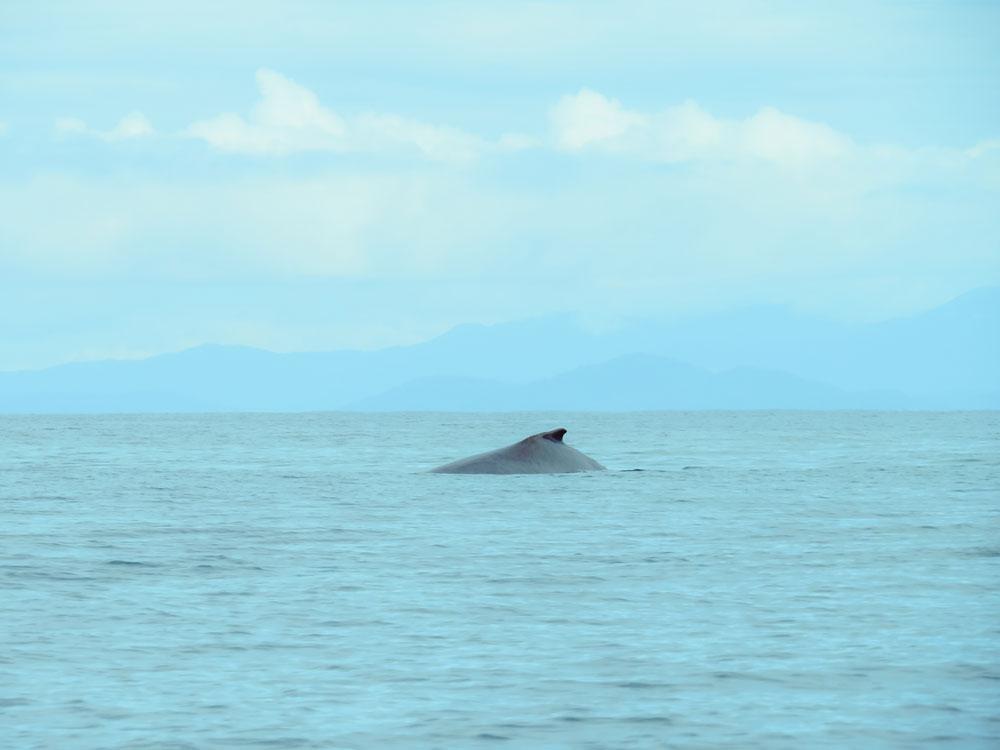
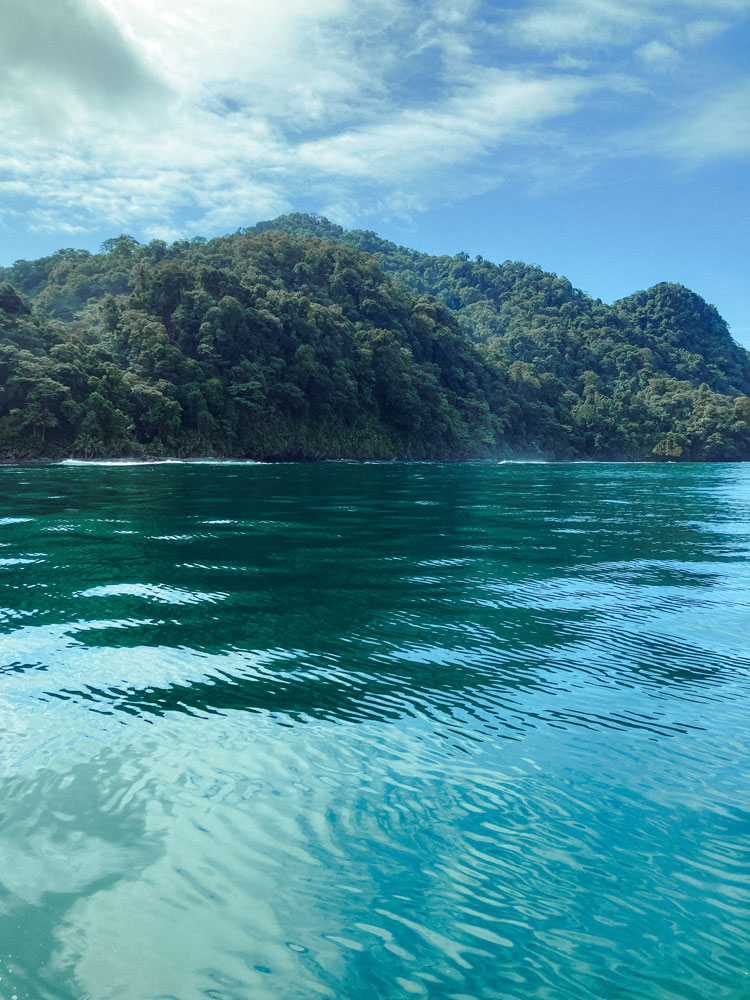
We arrive at Maestra Mercedes' place. Maestro Diego parks the boat, and as we enter the viche production area behind Maestra Mercedes' modest home with her friendly husband Dionisio, we are transported back in time. She produces a viche, still unnamed, and after two hours of conversation, she tells us that if she had to give it a name, it would be Viche La Chola, her nickname.
Doña Mercedes produces her viche just as her mother taught her: she uses traditional pots with heads made of balsa wood, she uses plantain glue to join the various parts of the pot, and she distills over an open fire without any protection against the smoke. She scoops out the water with large calabashes, the tubs where she ferments the sugarcane juice are covered with banana leaves, and whenever she goes out to harvest, she has to paddle for three hours to reach her sugarcane field. She stays there for 2 or 3 days until she finishes clearing, washing, and loading her boat with the sugarcane.
Her working conditions are too basic, if not precarious, and we leave her house with the certainty that vicheProduction, in general, urgently needs improvements. A person working alone, breathing in the smoke from the bonfire, having their eyes affected by it, and under superhuman effort to extract their distillate, needs better conditions to carry out their work. This is a job that is often neither visible nor recognized by intermediaries and consumers who demand low prices.

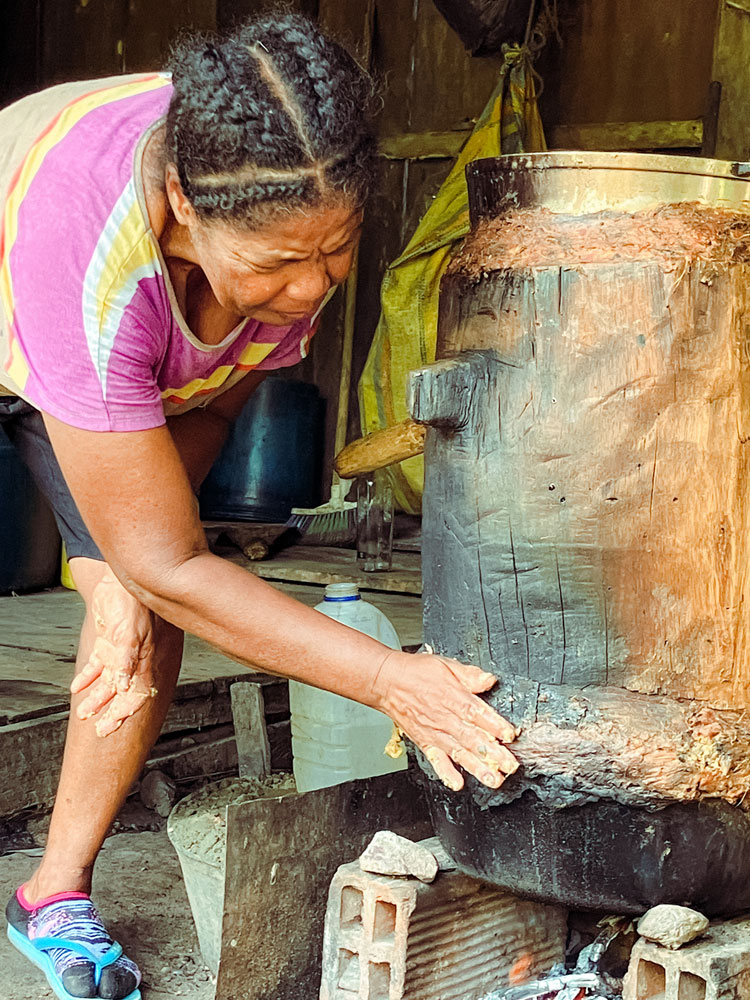
VIRUDO
We proceed another 10 minutes by boat until we reach the village of Virudó, home to a humble community of stilt houses comprising approximately 100 families who make a living from plantains, Chinese potatoes, fishing, rice, piangua, and viche. However, viche production has been sidelined as an economic activity in recent times as producers have had to focus on growing their own food for subsistence.
Similarly, there is a significant challenge for the leadership of Virudó in improving the quality of life for the inhabitants of the village, as there is no state presence, which negatively affects the community's development. The logistical challenge for producers to transport their viche to the city is enormous, and there is also a large number of people who are victims of forced displacement, especially from Cuevitas, another nearby village heavily affected by the violence of armed groups.
We met with a representative from the Unit for Victims, which provides protection and assistance to victims of forced displacement under Decree-Law No. 4635 of 2011, which establishes measures for assistance, comprehensive care, reparations, and land restitution for people belonging to Black, Afro-Colombian, Raizal, and Palenquera communities. Nataly is visiting the township for the first time and has the mission of delivering musical instruments to the community.
We have the privilege of meeting so many strong, incredible women, and viche producers like Doña Moita, Doña Hermínia, and Doña Eva, among many others, each with impactful stories of resilience.
During each visit we make to the homes of the viche masters in Virudó, we are accompanied by Master Diego and Master Susana, who eagerly exchange their knowledge. It's a beautiful experience to witness this interaction for the first time between producers from different regions of the Pacific, eager to learn in detail about other techniques to produce viche.
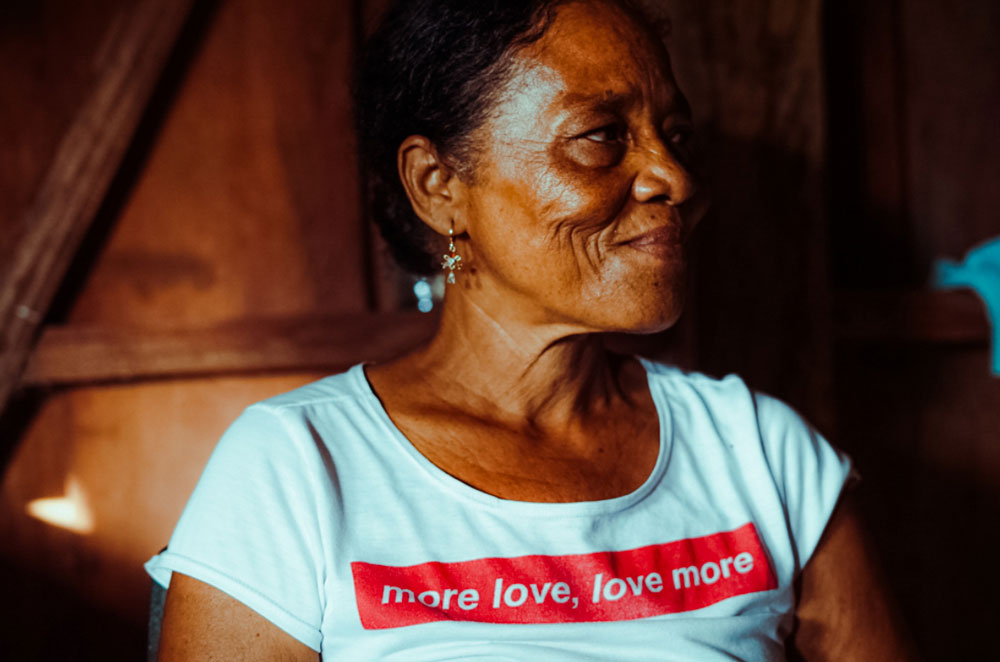
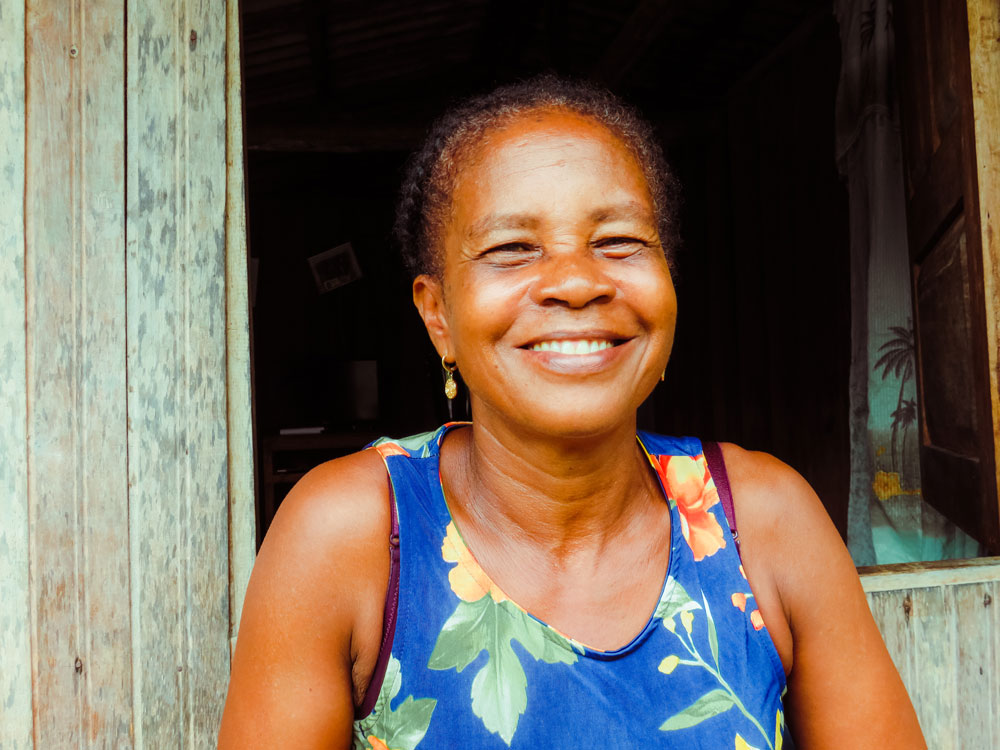
One of the most labor-intensive techniques is bailing, the constant exercise of changing the water in the pot or kettle to prevent the viche from rebounding during distillation. Additionally, the producers are constantly exposed to the smoke from makeshift stoves. Master Diego and Master Susana are getting to know their production methods and explain that a simple hose system can be introduced to cool the water. They also suggest building ovens with chimneys to avoid contact with the smoke, which generated a lot of excitement among the viche tradition bearers in Virudó.
The two nights we spent there were lively with parties celebrating the arrival of the instruments delivered by the Victims Unit to the community.
Two days later, we set off for Terrón in a large boat that accommodated around 60 people. To the tune of songs, laughter, and many smiles, we navigated the winding maritime roads surrounded by the incredible and imposing mangroves; an hour and a half later, we dropped off some women, several of them viche producers who had been taken by the Victims Unit to Virudó. We passed by Cantil and then continued to the Pilizá district, which is an access point through which we had to cross to continue the journey towards Siviru; we reached Pizarro by motorcycle along the beach, 30 km later.
Once in Pizarro, we met our host and resident of Siviru, Heiler, with whom we continued our journey by boat, embarking on an adventure across open seas and then rivers until we reached our final destination, already at night.
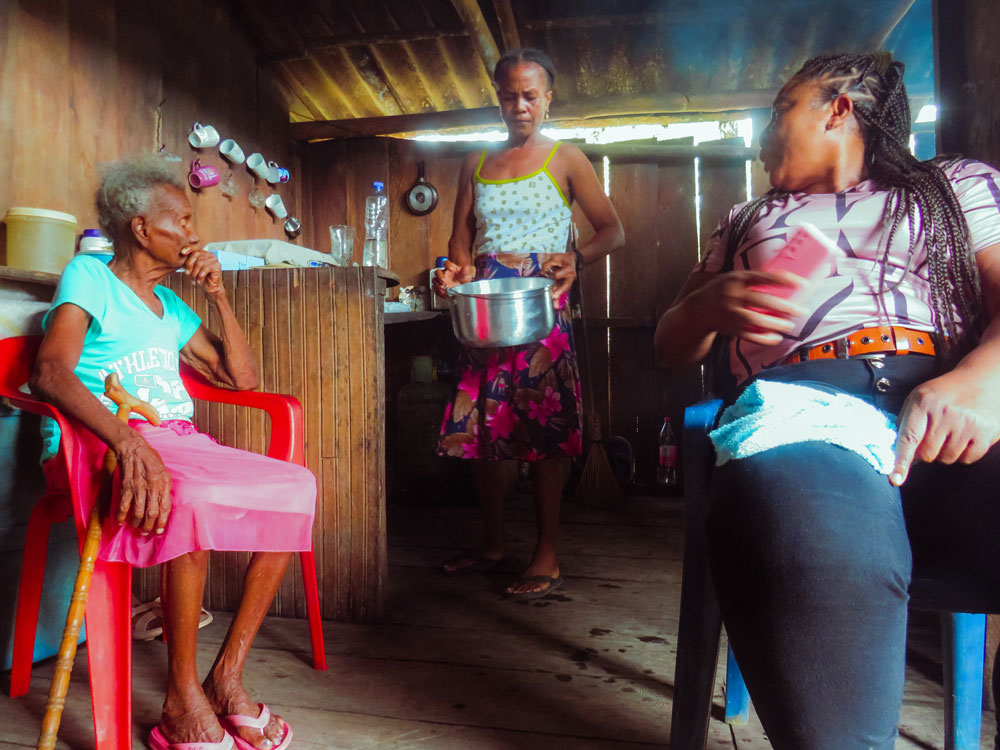
SIVIRU
It is considered by its inhabitants as the island of charm and the land of abundance. A more developed community, with brick houses, which has innovated in the production of viche. They live off fishing, piangua harvesting, timber, and viche production and have the advantage of having the nearby sea as a route to sell their produce. However, they are forgotten by the government; some of its inhabitants explain that government projects do not reach them because the area is considered risky, as the sea can sweep away the community at any moment. In fact, the effects of climate change have strongly threatened the community; in August of this same year (2023), there was a storm where the sea grew too much and flooded part of Siviru.
They have neighboring communities such as Dotenedon, Uzaragá, Pomeños, Manglares, and Madera. In addition, the indigenous Emberá community coexists in complete harmony with the inhabitants of Siviru and is part of the town.
There is a less tense atmosphere in Siviru. Apparently, there is no presence of armed conflict, which may allow the community to live more peacefully and have more financial resources. Although this is affirmed by the majority, there are other people who timidly confess that it is best not to talk much about the topic. However, this doesn't mean that it is a prosperous community, as it faces significant infrastructure challenges such as the lack of a water supply system or a sanitary landfill, to mention a few. Additionally, there are educational challenges: the school lacks bathrooms, for example, and indigenous children aged 7 to 14 who study there stay overnight in a classroom from Monday to Friday, away from their families, relying on the kindness of teachers and friends to feed and care for them.
In Siviru, we met with a group of women organized through a producers' association called Siviviche, which is seeking to establish a common sugarcane crop to better organize themselves in the production and marketing of viche. Their main goal is to increase scale and achieve more collaboration since traditional pot distillation is very labor-intensive. Some of them have acquired stainless steel pots with greater capacity for distillation and rent them out to other producers.
After tasting excellent viches made by these entrepreneurial women and being welcomed by several of them in their homes, two producers caught our attention for their work, personality, and determination: Nora and Vicky, incredible viche masters who, with their refined distillation techniques, produce viche of incredible quality. We hope to soon see their brands, Chaka Chaka and Esperanza in La Vicheria.
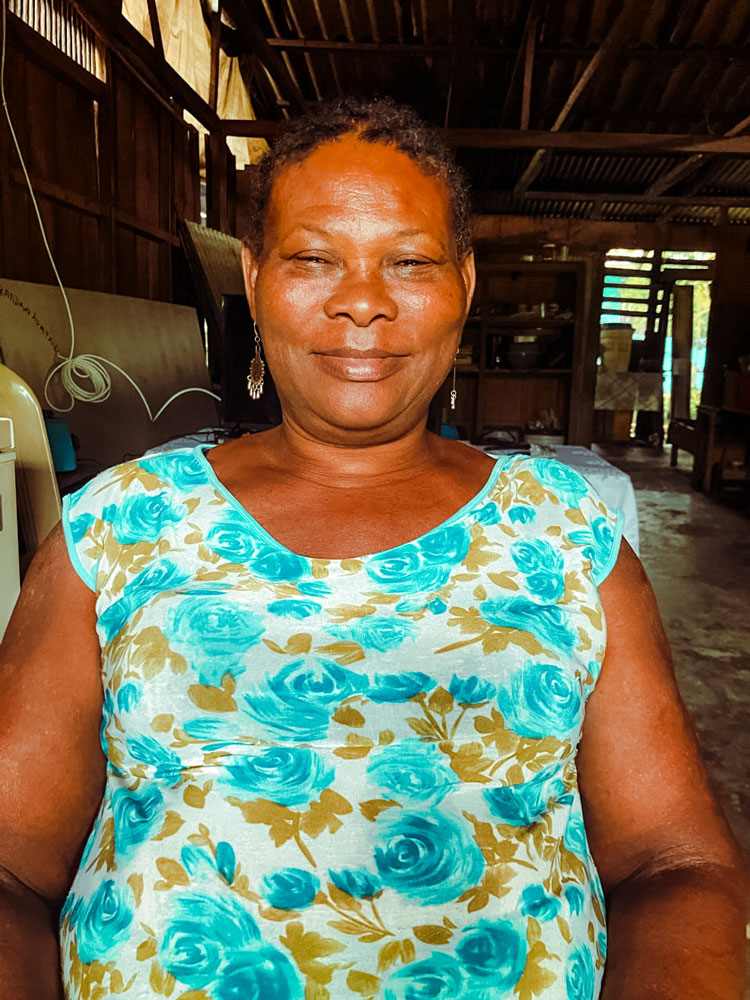
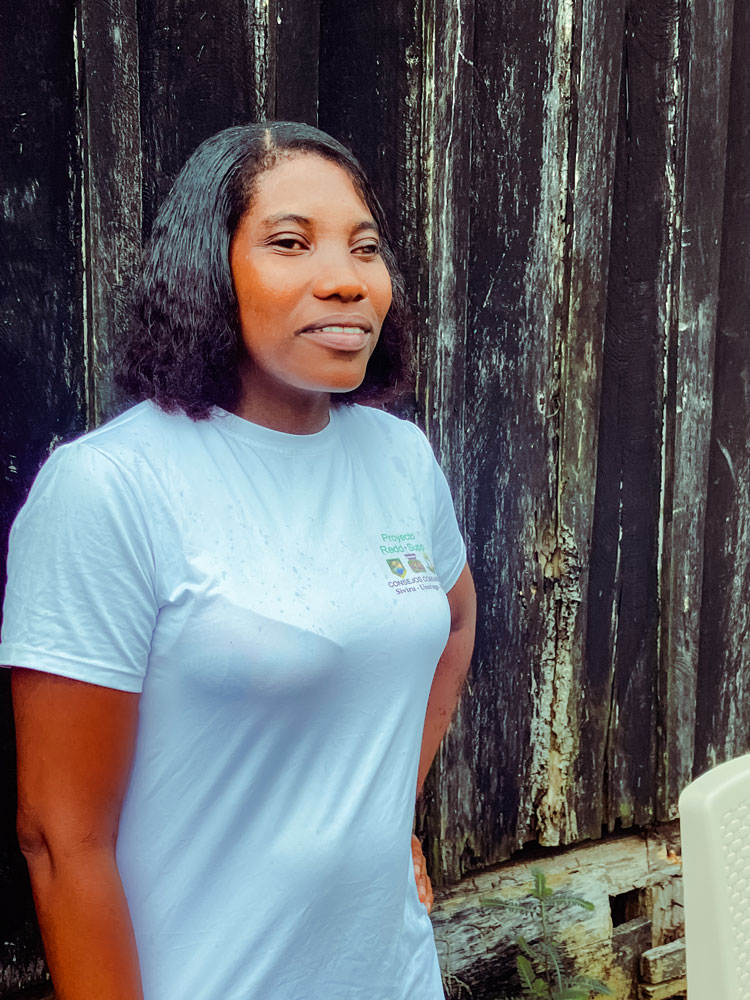
After 8 hours on a boat departing from Siviru towards Buenaventura, followed by another 3 hours to reach Cali, we concluded our Chocó Mission.
We conclude this journey with the conviction that viche is an extraordinary product, crafted by resilient women who have upheld their tradition – many of them fighting to support their families with courage. We also reflect on the importance of improving the quality of life and working conditions of these women, which can be achieved simply and with minimal financial investment, without altering the tradition of crafting this powerful and spiritual spirit.
The extraordinary journey of viche and the route to bring a bottle to Cali, Bogotá, Medellin, and Cartagena is long and arduous, and this story must be known and discussed so that its commercialization takes the right direction. This will ensure that the producers can truly earn fair profits from the sale of their ancestral distillate.
(This article is the result of a journey undertaken to meet viche producers in territories with a viche-making vocation in the Colombian Pacific, in which Maestra Susana Montaño Granja from Viche del Solar, Maestro Diego González Valdés from Viche Son de Caña, Jhonny Coffey, and myself, Sonia Sofia, participated.)

